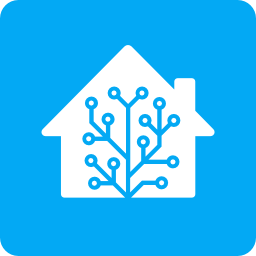How do you guys run home assistant?
I tried out home assistant using virtual box on my main pc and I enjoyed what I could do with it so far. So, I ordered a mini pc (https://www.amazon.com/dp/B0C89TQ1YF/) with the intention of running home assistant’s OS so that it’s always running regardless of Windows doing what it wants with my PC.
I run other things all the time on my main pc too, plex, isponsorblocktv, tartube, things like that. Is running just home assistant on that mini pc going to be overkill? Should I just put Linux on it and run home assistant on there some other way so that I can also run some of these other things there? Will home assistant take a noticeable performance hit?
Edit: For anyone curious, I installed Linux mint and run home assistant in virtualbox on there. I’m not experiencing any issues. I moved isponsorblocktv to the mini pc, and added the mini pc as a server to my plex. It doesn’t have enough space for me to comfortably move plex entirely off my main pc. With plex limiting remote play to plex pass I’m probably going to just use jellyfin which i already had setup on my main pc. At some point maybe I’ll add an external hard drive and run jellyfin on the mini pc instead. I’ve done this for a short while and Windows has already restarted my main PC of it’s own free will, so 👍
RasPi 4B with the dedicated HassOS distro.
Installation was easy. Upgrades run regularly and very stable.
Same here. Never any noticeable performance issues. I’m happy with this choice, given low cost, energy efficiency, stability. I also like that I can dedicate the hardware to HA, whereas I’d be tempted to share if I had a more capable box
However I only have a couple dozen devices and don’t attempt to run anything intensive like voice processing, image recognition, or any sort of media streaming.
Home assistant in a podman container uses only about 400mb memory and .05% of cpu on my home server.
Put Linux on your mini PC and you can run dozens of services on it without it breaking a sweat.
Same just running in docker have DNS and few other services running side by side on a pi4
I personally run it on a MiniPC that runs proxmox. You could run other stuff on it through proxmox as well. I would definitely recommend running always on server stuff on something other than your main daily PC.
You could probably run all the other stuff on there as well, although transcoding might slow things down a bit. HA itself should be fine as once you’ve set up all your automations it’s not like you need to interact with it directly and you’ll just get a little bit of lag at worst.
This is the way!
N100 running all my containers including Jellyfin with NFS to the NAS and HAOS. It works beautifully. Never experienced as much as a hickup. 8W idle and <20 W under load.I know I’m late to the party, but if OP goes for a N100 NUC, he should repaste before starting. Factory used way to little and cheap paste.
On a Pi4.
I was running it on a VM on the home server but then any downtimes that machine had were also HA downtimes. Decided that mattered enough to run it on it’s own hardware.
Also Pi4, with a RaspBee Zigbee thingy on the io. I think 0 unplanned downtime so far after a year and a half on that device
Pretty much any cheap minipc will do. A very power efficient N100 is more than enough, and probably cheaper than a Pi board now.
Proxmox HA cluster with a SAN. VM migrations go wheeeeeeeeee.
I’d just run HA on the mini PC. There are a boatload of add-ons that you can install which will allow you to make better use of the hardware.
3b+ here. I’d like to upgrade to a 4 or 5 but haven’t had any pressing reason to do it.
Wow! That’s unexpected, because of the memory limitation. I have a Pi3 with Fedora IoT with a target on its back for a Home Assistant container. (I see another comment here notes 400MB of memory use so it seems much smaller than I expected.)
Could I ask how many devices it’s dealing with, or because I’m not running Home Assistant yet, whether routine number/complexity is a better metric? (That question went bad somewhere, excuse me.)
An Insteon integration with a hub and a bit more than a dozen switches, water sensors, etc.
Maybe 4 or so z-wave devices connected via a USB dongle on the Pi.
The Alexa integration for the direct Wi-Fi bulbs. Maybe 6-ish. Also for wife-acceptance.
So- small and unorganized. I really want to wipe and start fresh to be more organized. I also want to learn how to do cross-integration triggers and actions.
Thank-you.
I’m not dealing with much more. Maybe twenty IoT devices in total but quite a few routines spread over Alexa and Smart Life.
I have a “server” cobbled together out of old PC parts. I have proxmox running on it and Home Assistant is one of the VMs running on that machine.
HAOS on a virtual machine inside on unraid on home server made from old pc parts.
The house has to work damn near 100% of the time, so I run it on a dedicated Raspberry Pi 4 that has Home Assistant OS with the full stack on it. Works great!
Yeah or you sleep on the couch…😆 Joke aside. Yes I also run it on a dedicated device. I use one of those dell micro PCs.
I’ve got a Lenovo m910q in my basement with home assistant running on docker. (Also on that machine is an overly large set of docker images doing other stuff. I wish I knew enough about docker compose when I set up home assistant, because that’s the only server that will cause a bit of pain if it fails and I need to resurrect it. (I’ll do it right next time… )
Partial list of services that PC has: home assistant, adguard, swag (reverse proxy), *arr stack(downloading files), calibre(book housing), jellyfin(movie and TV streaming), mealie(recipe management), habatica(habit fixing tool), homepage (to manage all the links and ports), and a 3 user Minecraft server. I only notice things going wrong when watching a movie AND playing Minecraft.
I tried setting up orcaslicer, but so far I hate it. (Hosted, it’s not a pleasant experience)
I have an Intel NUC (3rd gen I think - it’s several years old by now) which runs Proxmox, which runs several VMs including Home Assistant on HAOS. The only thing I did was upgrade the RAM as the VMs eat this quickly…
Other services I run on this small box are AdGuard, Paperless-ngx, KitchenOwl, tt-rss and two Nightscout instances.
I run it on a Raspberry Pi 4 (I happened to have a spare one, also BUY EUROPEAN and all that). There’s a dedicated image for it.
I have HA running as a native service on my home server, which is composed of literal garbage parts from other PCs, and runs many other native services in tandem, including Plex and some VPN gunk. HA has very low system demand, and it only makes sense to use a dedicated system for it if it’s very low-powered and you have no other server in the home.
What you should do is set all of your services up on your new mini PC and use that to host all of your services, allowing you to power down your likely more power-hungry PC.
I’m currently running mine on a spare Raspberry Pi 4, but the fan on it is kind of loud, so I’m considering getting myself one of those home assistant green machines.





